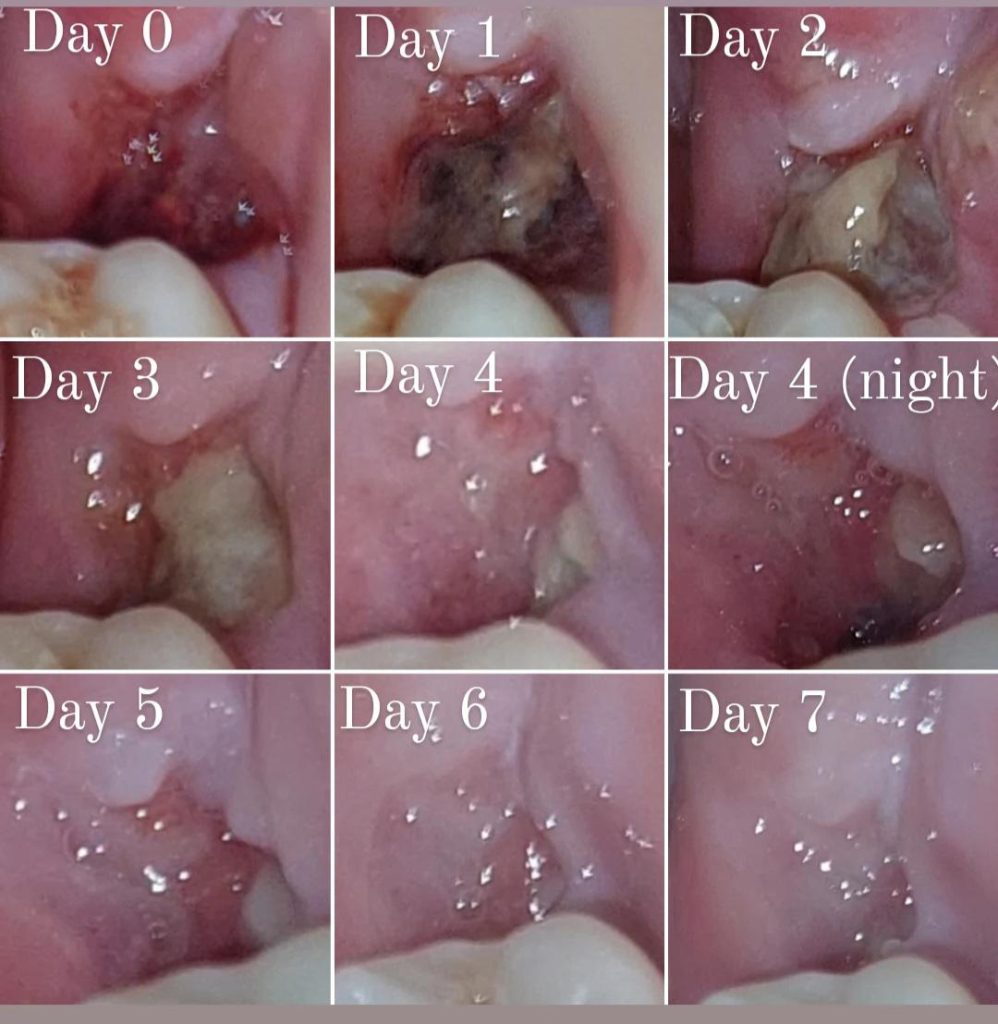
The bleeding stops, but you’re still cautious with every sip and every word
The first few hours are all about gauze. You bite down gently. Change it when soaked. Avoid spitting. Avoid rinsing. You feel the clot form. That clot is everything. It seals the site. Starts the repair. But it’s fragile. You speak softly. You don’t drink through straws. Every movement feels risky. And that’s because it is.
Day one feels tender, but not unbearable—the anesthesia has faded, but soreness remains
Your jaw aches. The gums feel raw. Painkillers help. Ice packs help more. You eat slowly. Soft food only. Lukewarm soup. Pudding. Scrambled eggs. The site feels swollen. But manageable. You clean your mouth gently. You avoid brushing near the extraction. You sleep with your head elevated. It’s not pain—it’s awareness.
By day two, the swelling rises and bruising may begin to show across your cheek
It gets worse before it gets better. That’s expected. Swelling often peaks 48 hours in. Your cheek may puff. Your jaw may feel tight. Maybe some bruising. Purple or green under the skin. That’s your body rebuilding. You still rinse carefully. Salt water only. Not forceful. Not yet. The clot is still vulnerable.
The third day comes with stiffness, and you start to notice how different your bite feels
It’s not pain now—it’s pressure. A new sensation. Your tongue explores the site. It feels emptier. Oddly smooth. You chew on the other side. You speak less. Your jaw may click slightly. It’s not dislocation. It’s adaptation. Your mouth is adjusting to the absence. Healing changes shape before it brings comfort.
By the end of the first week, your mouth begins to feel familiar again, even if slower
You brush more confidently. You rinse with more motion. Still no straws. Still no crunchy food. But soup becomes pasta. Pudding becomes rice. The site may itch a little. That’s a good sign. Nerves reawakening. Tissue reknitting. You still avoid smoking. Still skip alcohol. But your mind shifts. You feel functional again.
The second week brings a scab that begins to dissolve, and a gum line that tightens around it
You don’t see it, but it’s there. Granulation tissue replaces the clot. Pink and firm. You no longer need gauze. No longer fear brushing nearby. But you still protect the space. No popcorn. No chips. Nothing sharp. The site contracts. That tightening feels odd. But it’s how your gum seals in the repair.
By day 14, the risk of dry socket fades—but you’re not quite done yet
The biggest fear is behind you. Dry socket risk drops sharply after two weeks. But healing isn’t over. Bone rebuilds slowly. Gums reshape gradually. If sutures were used, they begin to dissolve. If not, you return for removal. Either way, your dentist may inspect the site. A green light, but not a finish line.
Over the next month, bone fills the socket from deep within—it’s quiet work, but steady
It’s not visible. Not dramatic. But deep inside, cells work. New bone forms. Slowly. Silently. It replaces the clot. Then the soft tissue. You feel no pain. Maybe mild tenderness if pressed. But most days feel normal. You forget you had surgery—until you touch the area. There’s still time ahead. But the pace is set.
By three months, the socket feels solid, and the shape of your gum begins to finalize
You chew without thinking. You brush without hesitating. Your dentist may mention future implants. Or bridges. But for now, your mouth is whole again. Not identical. Not what it was. But stable. Predictable. The healing is functional. And from this point, it rarely regresses.
Some cases—especially with wisdom teeth or bone grafts—take six months or more
Not all healing is equal. Deeper extractions demand longer recovery. Bone grafts extend timelines. Sinus lifts delay closure. You monitor the site longer. You follow up more often. But that doesn’t mean failure. It means depth. Precision takes time. Especially in the back of the mouth, where angles complicate repair.
